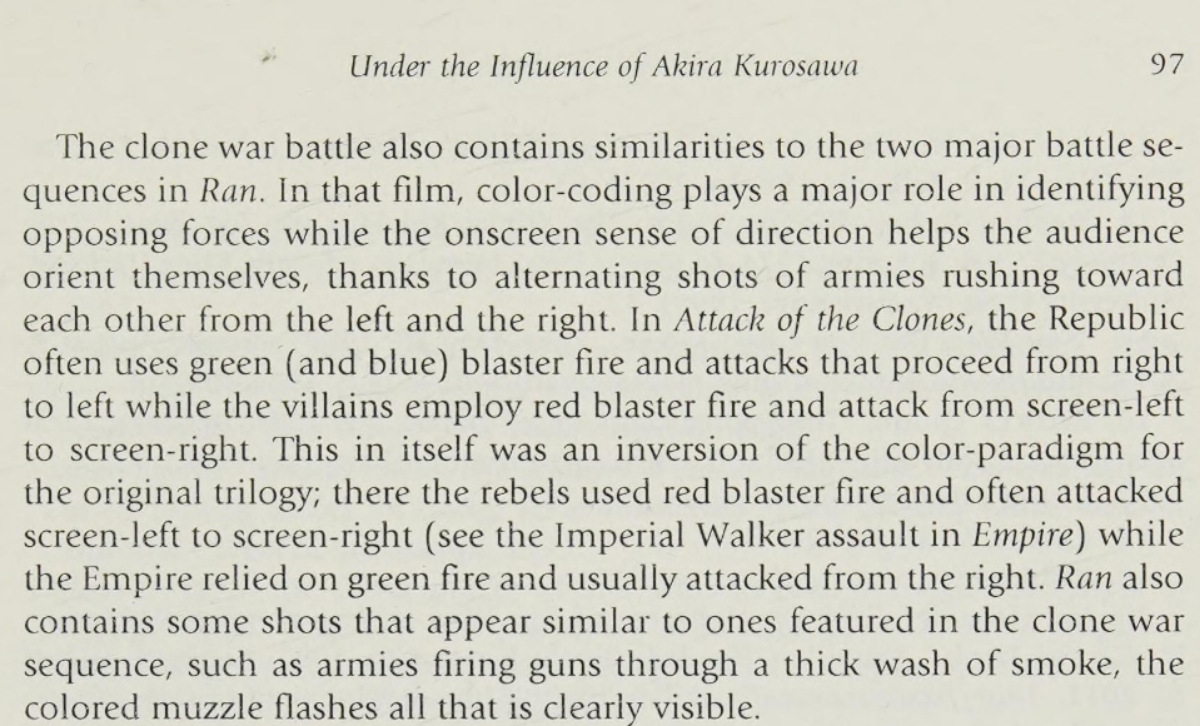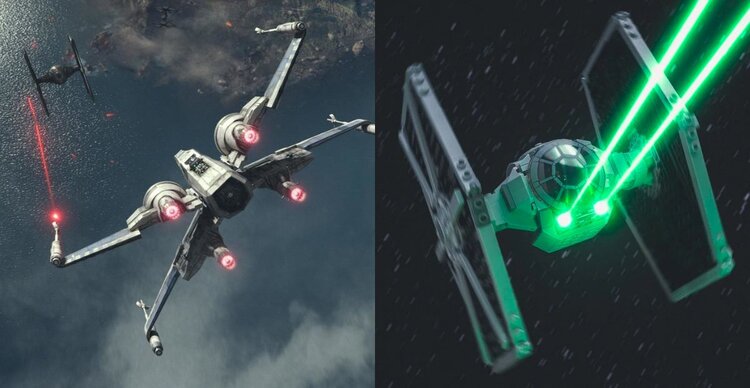You’ve probably noticed it too — the Rebels, who are supposed to be the heroes, fire red blaster bolts, and the Empire’s ships fire green. That feels backward, right? But when you start digging into how and why that choice was made, it turns out to be a mix of story, science, and filmmaking.
The Science Behind Blaster Colors
In Star Wars, blasters don’t fire lasers. They shoot plasma bolts powered by compressed gas. The type and quality of that gas change the color and strength of each shot. Red bolts come from cheaper gas, while green and blue ones use refined, high-energy fuel.
The visual guides and fan-encyclopaedias explain that red bolts are the most common and affordable. They show up in weapons used by the Rebel Alliance, the Confederacy of Independent Systems, the Galactic Empire’s infantry, and the First Order. Green bolts take more refined gas and burn hotter, so they’re favoured by the Imperial Starfighter Corps, Naboo security forces, and Umbarans. Blue bolts, often ion-based, were popular with the Galactic Republic’s clone troopers because they worked well against droids.
One of the most common power sources is Tibanna gas, mined from Bespin. It’s used in weapons and even hyperdrives. When it’s low-grade or unrefined, it produces red plasma. When refined and stabilised, it glows green. So the difference between Rebel red and Imperial green isn’t about morality — it’s about what kind of gas they can afford.
Real-World Inspirations From War Films
George Lucas and his effects team modelled the space battles after World War II aerial combat footage. In those real dogfights, pilots used tracer rounds so they could see where their bullets went. Allied planes used red tracers, and Axis planes often used green.
The effects crew realised red and green looked distinct on screen and helped viewers track fast-moving dogfights. Using two colours gave each side a clear visual identity, which made the chaos of space battles easier to follow. The design also reflected Lucas’s obsession with WWII-era imagery — X-wings dive and roll like Spitfires, and TIE fighters swarm like Luftwaffe squadrons. The red-versus-green colour scheme completed that throwback.
Kurosawa’s Influence On Colour And Direction
There’s another influence you can’t miss — Japanese filmmaker Akira Kurosawa, whose visual style helped shape how Star Wars battles look and move. In the book Myth, Media, and Culture in Star Wars: An Anthology, author Michael Kaminski explains how Kurosawa’s 1985 film Ran influenced Attack of the Clones and how Lucas used colour and direction to tell the story. :contentReference[oaicite:0]{index=0}
Kaminski writes:
“The clone war battle also contains similarities to the two major battle sequences in Ran. In that film, colour-coding plays a major role in identifying opposing forces while the onscreen sense of direction helps the audience orient themselves, thanks to alternating shots of armies rushing toward each other from the left and the right.”
Then he explains how Lucas flipped those same techniques in Attack of the Clones:
“In Attack of the Clones, the Republic often uses green (and blue) blaster fire and attacks that proceed from right to left while the villains employ red blaster fire and attack from screen-left to screen-right. This in itself was an inversion of the color-paradigm for the original trilogy; there the rebels used red blaster fire and often attacked screen-left to screen-right (see the Imperial Walker assault in Empire) while the Empire relied on green fire and usually attacked from the right.”

Kaminski adds that Ran also used similar visual setups, with “armies firing guns through a thick wash of smoke, the coloured muzzle flashes all that is clearly visible.” Lucas borrowed that same cinematic language — colour and direction working together to make each army distinct.
The inversion matters, too. In the prequels, the Republic uses green and blue while the Separatists fire red, foreshadowing how the Republic later becomes the Empire. The shift in colours mirrors the moral shift of the galaxy — the peacekeepers becoming conquerors and the rebels inheriting the visual “language” of opposition.
Symbolism Behind The Colour Reversal
The colour choices may reflect more than just tactics. The Empire’s green symbolises control, precision, and power. The Rebels’ red represents rebellion, urgency, and resistance.
In the prequels, the Republic’s blue and green shots match its image as a structured government. When that same Republic transforms into the Empire, those colours stay — but their meaning changes. The red bolts later used by the Rebels carry defiance and desperation. Over the course of the saga, the colour meanings evolve with the story: what was once a symbol of order becomes a sign of oppression, and what was once the colour of the enemy becomes the mark of freedom-fighters.
Bonus: The Death Star’s Beam
The Death Star’s green super-laser follows the same pattern. It’s powered by massive kyber crystals, the same kind that power lightsabers. Kyber energy is incredibly refined and stable, so the beam shines green — just like the Empire’s high-energy weaponry. Both the Death Star and the TIE fighters share that same hue because they use the best, most efficient energy the Empire can get.


Red6Down
Wednesday 29th of October 2025
Both Rebels and Imperials' side arms ALL shoot Red Bolts though from both DH-17 Blaster Pistol and E-11 Blaster Rifle as seen in the Opening of A New Hope.